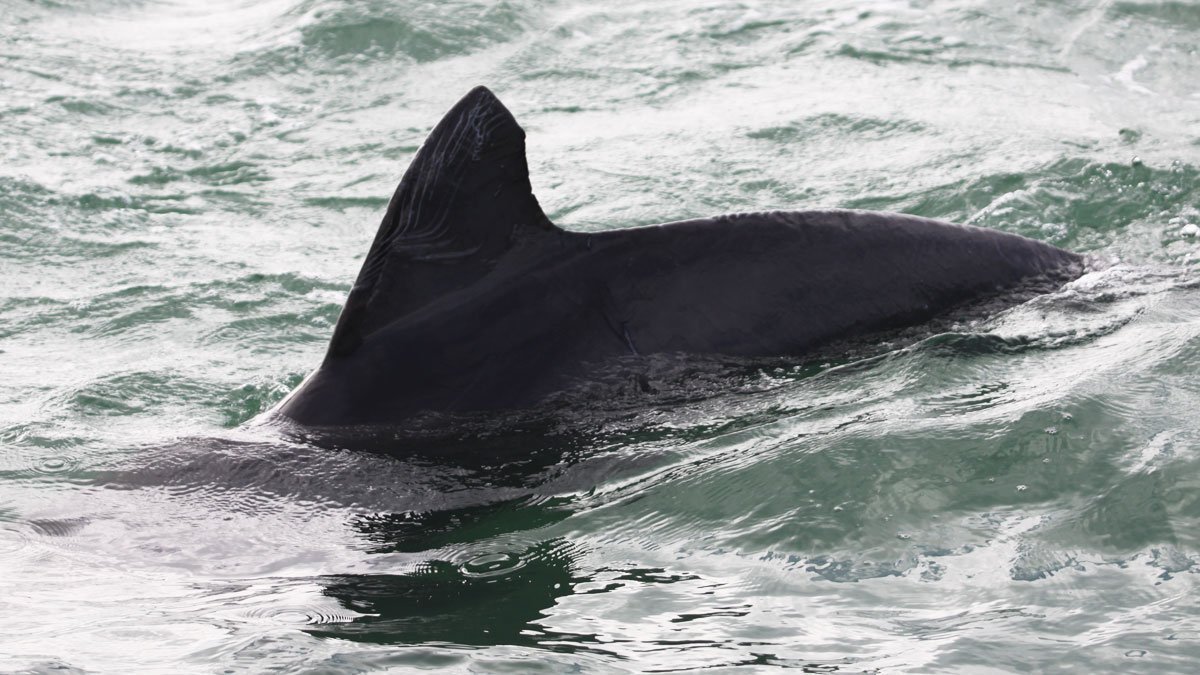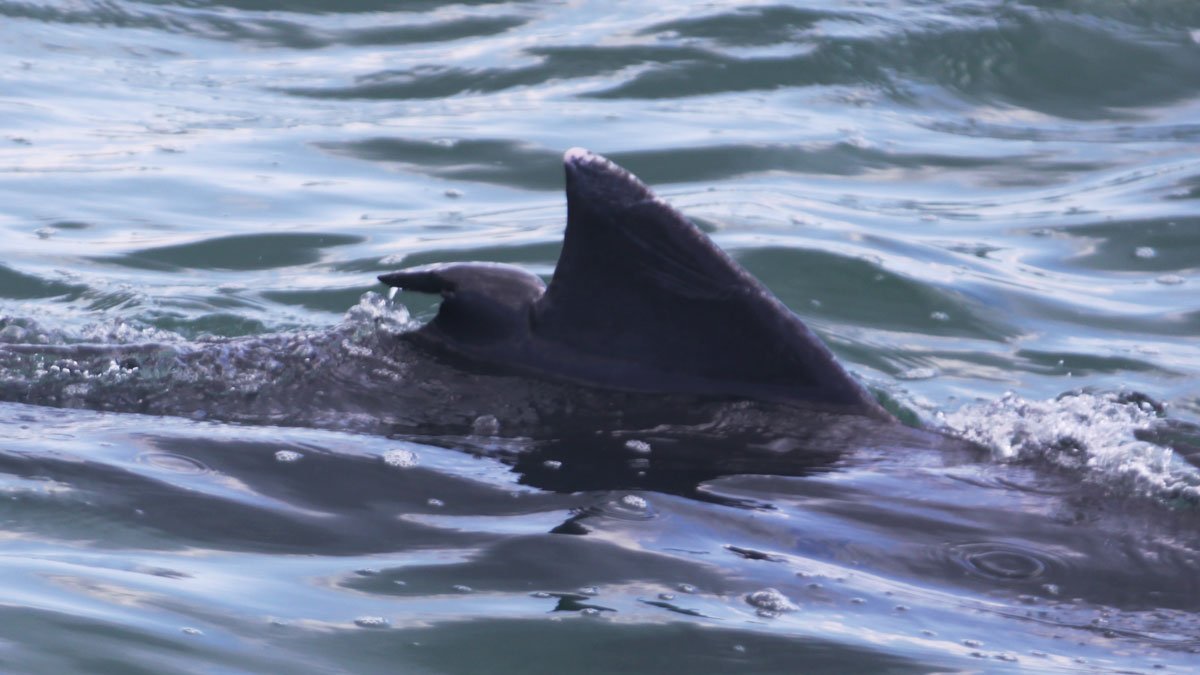Wild Dolphin Updates

Dorsal Fin Use
The dorsal fin helps us identify dolphins in our photo ID survey, but let’s think about how it functions to serve a dolphin.
Balance
The placement of the dorsal fin is thought to stabilize the dolphin in the water like a keel on a boat. Dolphins have a streamlined body, which lacks many external features. The shape or curve of the dorsal fin may also enhance their hydrodynamics. This helps reduce drag and lets them swim quickly and efficiently.
Temperature Control
The dorsal fin, and other extremities, also allow the animal to thermoregulate or control its body temperature. The fin and flukes are composed of dense, fibrous connective tissue lacking bone, cartilage, or muscle. This tissue is surrounded by arteries and veins that allow the dolphin to regulate their blood flow into their appendages, so if the animal needs to cool down, it would allow more blood flow to these regions and if it needed to warm up it can shunt it to keep blood closer to the core.
Damage to the Dorsal Fin
Still, we see some dolphins in our survey with extensive damage to the dorsal fin, and while the fin provides physiological benefits to the animals, we do not see this damage limiting their ability to thrive in the wild.
Everest, pictured above, and Rogue, below, are two of the most marked animals in our survey.

We do not know how such dramatic markings were formed on these two dolphins, but we typically speculate that markings in non-common areas, like the middle or top of the fin, might be from propeller cuts or other interactions with vessels.
Learn more about our local wild dolphin population on a Dolphin Adventure Tour.
Contributed by Savannah Gandee & Chelsea Carter, CMA Education Team. Research conducted and photographs collected under the NMFS Scientific Research Permit No. 19749.